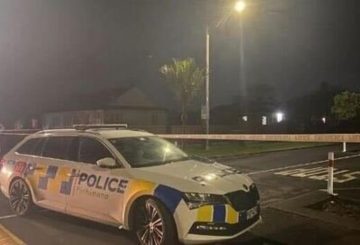Covid-19が初めて上陸した2020年初頭から、ニュージーランドでは警戒レベルシステムを採用しています。12月3日から、これが新しい信号システム(traffic light system)に変わります。
ジャシンダ・アーダーン首相は、新しい信号システムの発効を発表しました。彼女は、「ほとんどの場合、ワクチン接種をしていれば、通常考えられるすべてのことを行うことができる」と、人々に理解してもらうことが非常に重要であると述べました。
「レベルに応じて、その集まりの規模が異なります。」とアーダーン首相は続けます。
「信号システム」と呼ばれるこのシステムの正式名称は、「COVID19プロテクション・フレームワーク(新型コロナウイルス保護枠組とも)」です。
信号機のように、このフレームワークには赤、オレンジ、緑の3つの設定があります。
各地域のワクチン接種率によって、どの設定になるかが決まりますが、12月3日には、赤かオレンジのどちらかになる予定です。
「ワクチンの接種率、症例数、それが大きな判断材料になりますが、同時に現実的な判断も行ないます。つまり、1回目のワクチン接種率が90%に達しているかどうかが、今後の方向性の目安となります。」
- この設定では、病院はワクチン証明書があれば利用できますが、人の集まりは制限され、物理的な距離を置くこと、マスクの着用、その他の公衆衛生上の措置が取られることとなります。
- 飛行機、公共交通機関、タクシー、小売店、会場などではマスクの着用が義務付けられ、記録の保存とスキャンが必要となる。
- ほとんどの人は在宅でのリモートワークを推奨されるが、幼児教育センター、学校、クラ(マオリの学校)は公衆衛生上の措置を取った上で開館できる。
- 公共施設は100名まで、対人距離1mのルールで開館可能です。小売店も1mの距離の確保が必要です。
- 一部のコミュニティイベントでは、定員を制限することがあります。
- この設定では、集まる人の制限は適用されませんが、ワクチン接種証明書を使用しないことを選択した会場は、閉鎖されるか、公衆衛生上の措置が取られます。
- ワクチン接種証明書を使用する場合、接客業、結婚式、教会などの礼拝所、公共イベント、密着型ビジネス、スポーツジムなどでの集まりは制限を受けません。
- 証明書を使用しない場合、接待や集会には制限が適用されます。
- 証明書を使用しない場合、イベント、スポーツジム、密着型ビジネスは運営できなくなります。
- 緑の設定は、コミュニティ内のCovid-19感染者のレベルが低い場合です。
- ワクチン接種を完了している人は、ワクチン接種証明書を提示すれば、すべての公共イベントや接客施設に参加することができます。
- 証明書を使用しないことを選択した施設は、現在の警戒レベルの枠組みに類似した制限を受けることになります。




























































